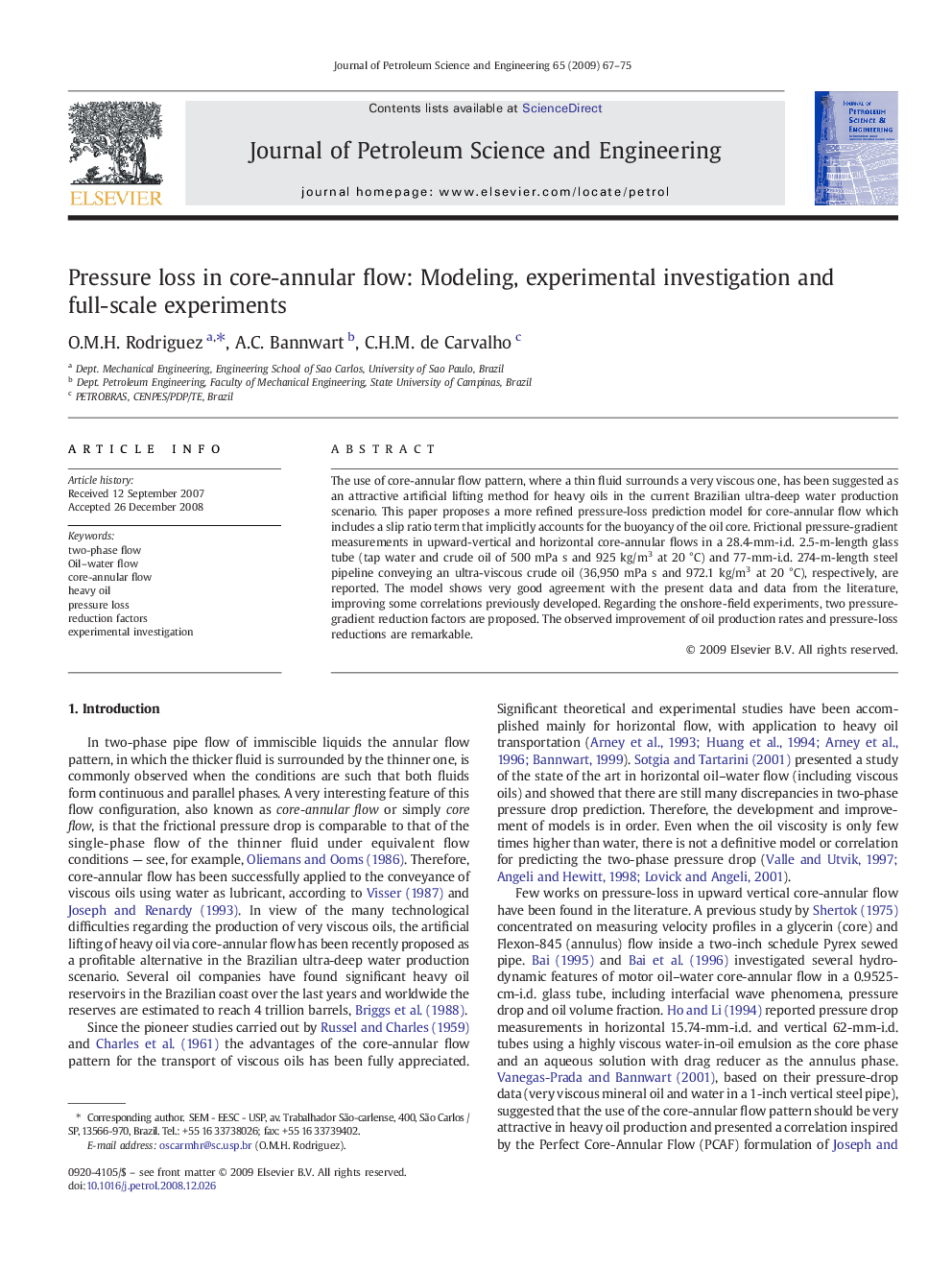| Article ID | Journal | Published Year | Pages | File Type |
|---|---|---|---|---|
| 1756127 | Journal of Petroleum Science and Engineering | 2009 | 9 Pages |
The use of core-annular flow pattern, where a thin fluid surrounds a very viscous one, has been suggested as an attractive artificial lifting method for heavy oils in the current Brazilian ultra-deep water production scenario. This paper proposes a more refined pressure-loss prediction model for core-annular flow which includes a slip ratio term that implicitly accounts for the buoyancy of the oil core. Frictional pressure-gradient measurements in upward-vertical and horizontal core-annular flows in a 28.4-mm-i.d. 2.5-m-length glass tube (tap water and crude oil of 500 mPa s and 925 kg/m3 at 20 °C) and 77-mm-i.d. 274-m-length steel pipeline conveying an ultra-viscous crude oil (36,950 mPa s and 972.1 kg/m3 at 20 °C), respectively, are reported. The model shows very good agreement with the present data and data from the literature, improving some correlations previously developed. Regarding the onshore-field experiments, two pressure-gradient reduction factors are proposed. The observed improvement of oil production rates and pressure-loss reductions are remarkable.
